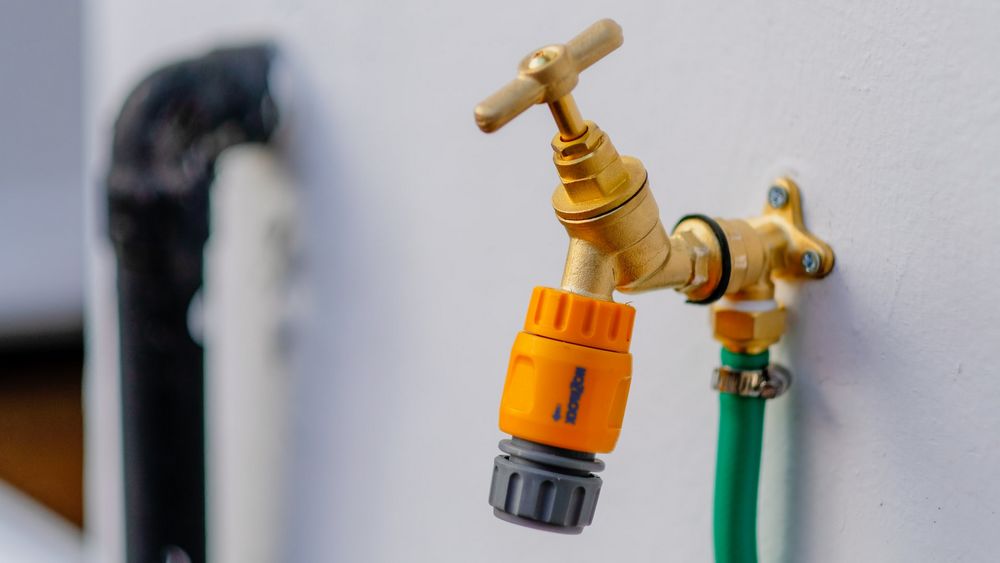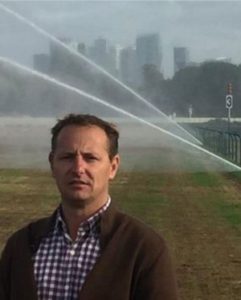The challenges of water management in green space maintenance
How can you sustainably manage a resource as precious as water when watering? We asked Pierre-Alain Madelaine, President of the SYNAA.

How can you sustainably manage a resource as precious as water when watering? We put the question to Pierre-Alain Madelaine, President of the French National Automatic Watering Association (SYNAA) for the last 11 years. He explains his vision of watering and gives his advice below!

How to save water in green spaces: our guide
Paysalia: Mr. Madelaine, we hear a lot about water shortages at the moment. Is this a threat for landscaping?

Pierre-Alain Madelaine: There is a lot of false news on this subject. There is no water shortage in France! Our water tables and rain water collectors are full. We can also know how to desalinate sea water and pipe it for long distances like many countries in the Middle East do to grow luxuriant gardens in the middle of the desert. To put water use in perspective, we only use 17% of the resources available and watering green spaces uses less than 1% of them.
And of course, this water is never lost. It returns to the Earth’s life cycle through evaporation. However, it must be used prudently as it has a cost and it requires power to access chemically clean water. The real problems concern sustainable water management and not its shortage.
Green cities: challenges of rainwater management
Why do green spaces need to be watered?
Water makes plants breathe, brings them oxygen and allows them to absorb CO₂ better - up to 4 times more than in a green space where water is scarce. It also permeabilizes the soil, reduces run-off and prolongs flowering periods which has a direct impact on biodiversity. Limiting watering can seem to be sensible but in fact does more harm than good. Sprinkling green spaces also reduces the ambient temperature by 3 to 4 degrees - a good solution to fight heat pockets in urban environments accentuated by global warming which disturb the wellbeing of the inhabitants. Plus, some public authorities prefer to save water and let their plants die, replacing them the following year. However, these new plants also need water to grow! This is neither environmentally-friendly nor economically sensible.
Discover also aquaponics, another smart use of water!
As President of the SYNAA, what is your opinion about watering?
We believe that sprinkling plants is good for the landscape as a whole, and so by extension good for everyone! If a green space is beautiful, it has been well watered! For us automatic watering is therapeutic. As landscaping professionals, our job is to use just the right amount so as not to waste water unnecessarily and facilitate green space maintenance conditions through automation. Generally speaking landscape designers know that! When they lay out a beautiful garden, they don’t want it to die!
The problem is mostly with non-professional landscape managers greatly influenced by fake news like public authorities, private companies and homeowners. Part of our mission is to promote awareness about the need for intelligent watering - the theme of our conference “the ecological impacts of automatic watering” at Paysalia 2017.
Founded in 1981, SYNAA members are all active in automatic watering systems for green spaces and sports grounds. They are committed to:
- Watering control and economic usage
- The installation of watering systems customized for each use and user
- Contributing to beautifying gardens and green spaces
- Promoting sustainable development
What innovations exist to manage sprinkling more intelligently?
Today you can sprinkle with nearly perfect precision, which was not the case 20 years ago. The latest automatic irrigation systems generate very important economies in green space maintenance - up to 50% savings on water and power. Connected to weather stations, “smart” automatic watering systems adjust their programming to local conditions and can now be remotely controlled. For smaller budgets, the installation of a rain gauge (costing 150 to 250 euros) is essential - when it rains, the following programmed watering session is cancelled. Although there are a host of innovations, there remain two obstacles to be surmounted so they are adopted everywhere.
The people managing these systems must be trained and we must get them to understand that restricting watering in green spaces is a very bad idea and that they need to take a long-term view by introducing sustainable and efficient solutions!
Discover our interview of Pierre-Alain Madelaine during Paysalia 2017!
Our thanks to Pierre-Alain Madelaine, SYNAA's President, for his contribution.
Photo credit: Unsplash / Harry Grout

